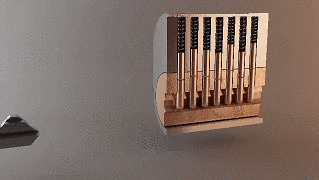The reciprocating saw, also known as a “sawzall,” is a highly versatile and powerful tool that is indispensable in construction, demolition, and remodeling projects. Its unique push-and-pull blade motion allows it to cut through various materials, including wood, metal, and concrete. This article highlights the key aspects of a reciprocating saw, answering common questions to help you understand its uses, benefits, and its relationship with geocell technology in construction.

What is the primary function of a reciprocating saw?
A reciprocating saw is primarily used for demolition and remodeling tasks. It is ideal for cutting through different materials such as wood, metal, PVC pipes, and even tree branches. This tool is commonly found on construction sites where it is used to quickly dismantle structures, cut through nails, or trim materials to size. Its versatility makes it a go-to tool for both professionals and DIY enthusiasts.
How does a reciprocating saw differ from other saws?
The reciprocating saw’s back-and-forth cutting motion distinguishes it from circular saws and jigsaws. This motion is perfect for making rough cuts where precision isn’t necessary. The saw’s exposed blade design allows it to reach into tight spaces and make cuts that other saws might struggle with. Additionally, reciprocating saws are built for heavy-duty tasks, making them durable enough to handle demanding jobs.
Is a reciprocating saw capable of cutting through metal?
Yes, with the right blade, a reciprocating saw can easily cut through metal. Metal-cutting blades, typically made from high-speed steel (HSS) or carbide, have fine teeth to handle the density of metal materials. This feature makes the reciprocating saw an excellent choice for cutting pipes, bolts, and metal sheets, especially in construction and demolition tasks.
What safety measures should be observed when using a reciprocating saw?
Safety is paramount when operating a reciprocating saw. Important precautions include:
- Wearing safety goggles to protect your eyes from debris.
- Using gloves to protect your hands from the tool’s vibration and sharp edges.
- Ensuring the material being cut is securely clamped to prevent it from moving.
- Starting the saw with the blade in contact with the material to avoid kickback.
- Maintaining a firm grip on the saw to control it throughout the cut.
In summary, the reciprocating saw is a powerful and versatile tool that is essential for a wide range of cutting tasks in construction and demolition projects. Its ability to cut through various materials, from wood to metal, makes it a valuable addition to any toolkit. When used alongside technologies like geocell, which aids in construction stabilization, the reciprocating saw is integral to modern building practices. Whether you’re a professional contractor or a DIY enthusiast, mastering the use of a reciprocating saw will significantly enhance your project efficiency and success.